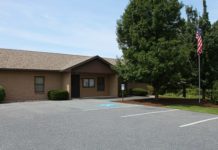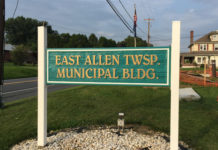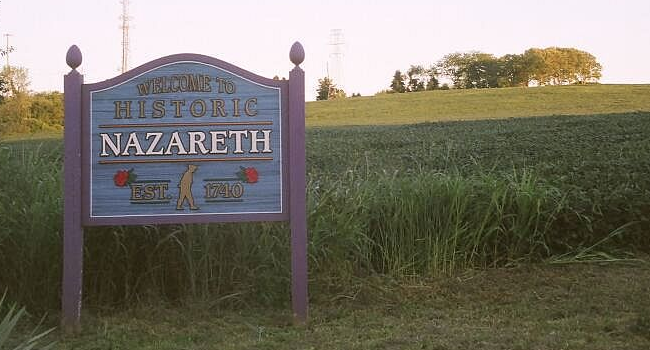In this third column, I continue to explore the history of Bath. The historical roots of the borough go back to 1737.
In 1861 the Civil War divided the country. The north responded to President Lincoln’s call and rallied to preserve the union. Fifty-six men from Bath served in the Grand Army of the Republic.
They served in the Pennsylvania 153th Regiment.
The man saw action at the Battle of Chancellorsville and the monumental Battle of Gettysburg.
Veterans after the war organized the G.A.R. (Grand Army of the Republic.) The volunteer infantry first brigade, 1st
Division of the 153 Regiment held reunions in Bath in 1895 and 1909. There they exchanged memories of their military experiences.
Thanksgiving Day in 1867 brought the railroad to Bath. The Lehigh Lackawanna R.R. now gave the borough a link with neighboring states. Eight trains moved through Bath daily, a ticket was priced at seventy five cents. Later the Lehigh New England, Delaware Lackawanna, and Northampton & Bath added rail service to the community.
Bath, like many communities, had a unique employee, a lamp lighter. It reminds us of a Charles Dickens novel. The lamplighter would, each night, light kerosene lamps which were attached to poles and extinguish them in the morning. This was a 365 day a year job. One of the last lamplighters was Emanuel Siegfried, he was also a police officer and his salary was $90 a month.
Municipal electric lights were installed in 1922 and the lamplighter became a memory.
Bath changed when the cement industry arrived in 1900. The new industry brought dozens of companies to the Lehigh Valley and thousands of jobs; soon we became the largest producer of Portland Cement in the world.
The first company to arrive in Bath was the Pennsylvania Cement Co. in 1900, to be followed by Penn Allen in 1904, Bath Portland in 1905, Keystone came a bit later in 1920.
When the cement companies came to the area there was a need for employees. Company agents went to Europe to entice people to immigrate to the Lehigh Valley. The immigrants were anxious to start a new life in a new country.
The influx of immigrants from Central Europe, Austria, Hungary, Poland, Ukraine and other countries came to work in the plants. They settled in Bath, Nazareth, Northampton, Coplay, Egypt, Cementon, Martins Creek, Stockertown, Ormrod and Fogelsville. They brought a solid work ethic, their customs and religions. The Sacred Heart Catholic Church was constructed in 1922. The church provided a house of worship for many of the new Americans. They joined Christ U.C.C. and St. John’s Lutheran Church and became part of Bath’s religious community.
See you in two weeks as we continue Bath’s history.








